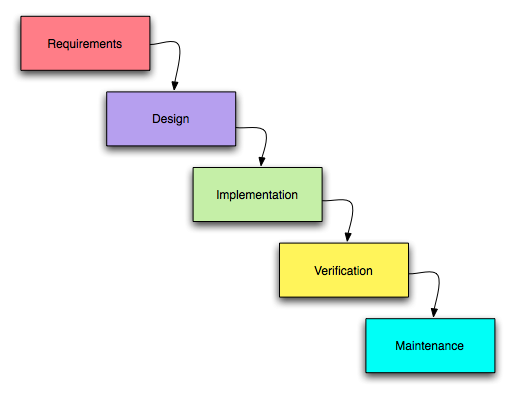
The waterfall model is a popular version of the systems development life cycle model for software engineering. Often considered the classic approach to the systems development life cycle, the waterfall model describes a development method that is linear and sequential.
The advantage of waterfall development is that it allows for departmentalization and managerial control.
The disadvantage of waterfall development is that it does not allow for much reflection or revision. Once an application is in the testing stage, it is very difficult to go back and change something that was not well-thought out in the concept stage.
The Waterfall method makes the assumption that all requirements can be gathered up front during the Requirements phase (Kee, 2006). Communication with the user is front-loaded into this phase, as the Project Manager does his or her best to get a detailed understanding of the user’s requirements. Once this stage is complete, the process runs “downhill” (Hoffer, et al, 2008).
The Design phase is best described by breaking it up into Logical Design and Physical Design subphases. During the Logical Design phase, the system’s analysts makes use of the information collected in the Requirements phase to design the system independently of any hardware or software system (Hoffer, et al, 2008). Once the higher-level Logical Design is complete, the systems analyst then begins transforming it into a Physical Design dependent on the specifications of specific hardware and software technologies (“Software Development Lifecycle”, n.d.)
